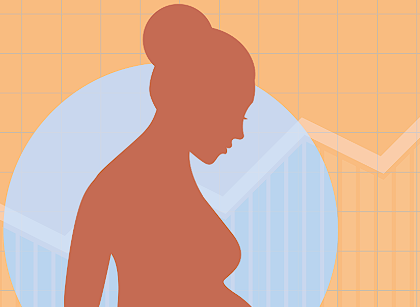Trends in Maternal Mortality: 2000 to 2023
The report Trends in Maternal Mortality: 2000 to 2023 is a new publication from the United Nations Maternal Mortality Estimation Inter-Agency Group (MMEIG), which includes WHO, UNICEF, UNFPA, the World Bank, and the UN Department of Economic and Social Affairs. Maternal mortality refers to deaths related to complications from pregnancy or childbirth. It is a critical indicator of healthcare quality.
Global Context
- The report from WHO and other agencies showed a 40% decline in global maternal deaths since 2000. However, the decline has slowed since 2016.
- In 2023, about 260,000 women died during pregnancy or childbirth around the world — that’s about 712 women each day. This is a 40% drop in deaths since 2000, showing that efforts to improve health services are working.
- For the first time, no country was found to have extremely high numbers of these deaths, and no region was labeled as very high-risk.
- But there are still big differences between regions. About 70% of all maternal deaths happened in sub-Saharan Africa, and nearly 17% in Central and Southern Asia. In 2023, 37 countries were dealing with conflict or serious problems in their systems, and they made up 64% of these deaths.
India
In 2000, India’s maternal mortality rate was 362 per 100,000 live births, dropping to 80 in 2023. In contrast, China’s rate improved from 56 to 16 during the same period. This marks disparities in healthcare systems between countries. In 2023, India faced maternal health crisis. It reported the second highest number of maternal deaths worldwide, tied with the Democratic Republic of Congo. The United Nations report revealed that India accounted for 19,000 maternal deaths, with Nigeria leading at 75,000. Despite improvements, the pace of progress has slowed, raising concerns about healthcare access and quality.
Regional Disparities
There are notable differences in maternal mortality rates across regions. Southern states in India, where access to private healthcare is better, show lower mortality rates. In contrast, northern states struggle with higher rates due to socio-economic challenges. Lack of resources in public health centres hampers the ability to manage complicated pregnancies effectively.
Impact of COVID-19 on Maternal Health
Maternal deaths increased during the COVID-19 pandemic but have now gone back to earlier levels. Still, the world is not moving fast enough to reach the goal of fewer than 70 maternal deaths per 100,000 births by 2030. In 2021, an estimated 40,000 additional women died due to pregnancy-related complications. Disruptions to maternity services during the pandemic contributed to this increase. The report emphasised the need for uninterrupted healthcare services, especially during emergencies.
Causes of Maternal Deaths
The primary causes of maternal deaths are direct obstetric complications. Postpartum haemorrhage is the leading cause, followed by hypertensive disorders and infections. Indirect causes, such as pre-existing health conditions, also contribute . Many of these complications can be prevented with timely medical care.
The Role of Healthcare Infrastructure
Effective healthcare infrastructure is crucial for reducing maternal deaths. Primary and community health centres often lack the capacity to handle complicated cases. Insufficient manpower and resources lead to referrals, which can delay critical care. Improving these facilities is essential for maternal health outcomes.
Preventive Measures and Recommendations
To address maternal mortality, a multi-faceted approach is needed. This includes enhancing access to quality healthcare services, training healthcare providers, and ensuring availability of essential medicines. Public health initiatives must focus on education and awareness to empower women regarding their reproductive health.
Month: Current Affairs - April, 2025
Category: Reports & Indexes Current Affairs








